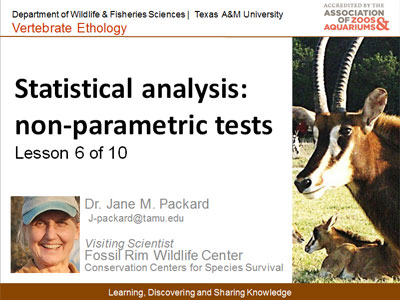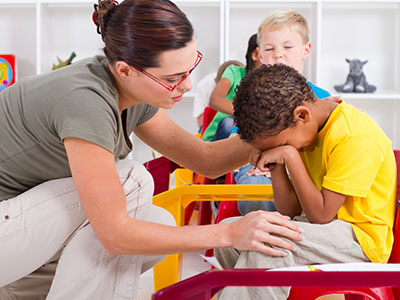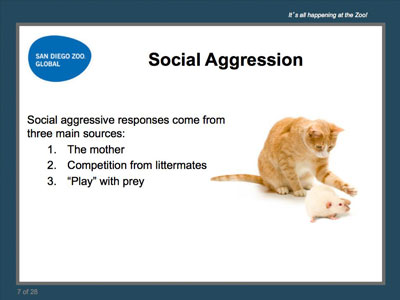 |
Sexual Harassment Prevention: Defining Sexual Harassment (Corrections) |
0.25 |
The learning objectives for this course are to avoid sexually harassing behavior and realize the cost of sexual harassment to an organization and to identify the psychological, health-related, and career-related effects of sexual harassment. |
 |
Sexual Harassment Prevention: Recognizing Harassing Behavior |
0.33 |
The goal of this course is to identify behavior that constitutes sexual harassment and understand the impact of sexual harassment in the workplace. |
 |
Sexual Harassment Prevention: Recognizing Harassing Behavior (Corrections) |
0.25 |
The goal of this course is to identify behavior that constitutes sexual harassment and understand the impact of sexual harassment in the workplace. |
 |
Sexual Harassment Prevention: Understanding Legal Issues |
0.25 |
The learning objective for this course is to describe the law against sexual harassment and understand an organization’s liability if a non-employee harasses an employee. |
 |
Sexual Harassment Prevention: Understanding Legal Issues (Corrections) |
0.25 |
The learning objective for this course is to describe the law against sexual harassment and understand an organization’s liability if a non-employee harasses an employee. |
 |
Sexual Harassment Prevention: Understanding Management Issues |
0.25 |
The goal of this course is to assess the need for a sexual harassment policy in an organization and respond appropriately to a sexual harassment accusation. |
 |
Sexual Harassment Prevention: Understanding Management Issues (Corrections) |
0.25 |
The goal of this course is to assess the need for a sexual harassment policy in an organization and respond appropriately to a sexual harassment accusation. |
 |
Shared Space 101 |
2.00 |
Afterschool programs share space and facilities that are used by other people and for other purposes during the school day. Learning how to accomplish this in a positive way is essential for effective programming. This course offers participants the opportunity to examine some common issues that can occur when sharing space, as well as strategies to effectively share space with a variety of people. |
 |
Sharing Economy |
0.50 |
This course covers what is meant by a sharing economy, the basics of using sharing economy smartphone apps, and some of the legal and safety issues associated with this type of internet commerce. |
 |
Sharing Information with Parents and Other Professionals |
2.00 |
School-age children work on many important developmental tasks during their out-of-school hours. One of the important responsibilities of OST staff is to help parents stay in touch with how their children are growing and developing during program hours. In addition to parents, professionals who work with children in other settings are often interested in learning how children spend their time when they are not at home or school.
Portfolios are excellent tools for bringing children’s experiences in OST programs to life for parents during planned parent conferences. They are also valuable tools for sharing helpful information about children with other professionals. |
 |
Sharing Information with Parents and Other Professionals (Collection) |
2.00 |
School-age children work on many important developmental tasks during their out-of-school hours. One of the important responsibilities of OST staff is to help parents stay in touch with how their children are growing and developing during program hours. In addition to parents, professionals who work with children in other settings are often interested in learning how children spend their time when they are not at home or school.
Portfolios are excellent tools for bringing children’s experiences in OST programs to life for parents during planned parent conferences. They are also valuable tools for sharing helpful information about children with other professionals. |
 |
Sharing Information with Parents and Other Professionals: Communication Tools |
1.00 |
School-age children work on many important developmental tasks during their out-of-school hours. One of the important responsibilities of school-age care staff is to help parents stay in touch with how their children are growing and developing during program hours. In this course, we will explore tools used to communicate with families about their children. |
 |
Sharing Information with Parents and Other Professionals: Policies & Conferences |
1.00 |
School-age children work on many important developmental tasks during their out-of-school hours. One of the important responsibilities of school-age care staff is to help parents stay in touch with how their children are growing and developing during program hours. In this course, we will explore policies and conferences. |
 |
SIDS and Other Sleep-Related Infant Deaths: Keeping Babies Safe |
1.50 |
This course will give participants a brief overview of Sudden Infant Death Syndrome (SIDS) and other sleep-related deaths. Participants will learn about recent research and statistics, the importance of child care providers, AAP SIDS Task Force recommendations, and how to implement polices in child care. |
 |
SIDS and Safe Sleep (CDA 1) |
2.00 |
Based on national standards representing the best evidence, expertise, and experience on health and safety policies and practices, and, focused on the American Academy of Pediatrics’ best practice recommendations, this course provides information on reducing the risk of Sudden Infant Death Syndrome (SIDS) and Sudden Unexpected Infant Death (SUID) and for promoting safe sleep in infant care settings. This course is designed to be part of a Child Development Associate (CDA) Credential™ curriculum. It covers CDA Subject Area 1: Planning a Safe, Healthy Environment to Invite Learning. This course can also be taken as a stand-alone learning event, or as part of a broader early childhood education curriculum.
|
 |
Simple Statistical Analysis: Non-parametric |
1.00 |
You have collected behavioral data, now how do you decide which statistics to use to test your hypotheses? Learn about spreadsheets that will aid you in calculating the simple non-parametric tests suitable for most behavioral data. The first step is to plot your data and stare at it. A research team will demonstrate how to analyze bar graphs (contingencies), scattergrams (correlations) and box/whisker plots (means). |
 |
Size-up Introduction #1412 (Instructor Guide) |
1.00 |
This is the Instructor Guide for Lesson #1412 Size-up. This instructor guide provides the instructor with lesson background, key points, and delivery methods. Required lesson materials including lesson plan, presentation, and evaluation quiz with answer key. The lesson is also accompanied by a learning aid that can be used a handout to lesson participants. Included in this guide is an explanation video of the presentation that describes each slide of the lesson. |
 |
Sleep is Essential to Good Health (CDA 1) |
2.00 |
This course delves into the science behind sleep, revealing its essential role alongside nutrition and physical activity. Explore recent research highlighting the impact of sleep on hormone regulation, obesity risk, brain development, cognitive function, and behavior. Discover age-specific sleep requirements and gain practical tips and recommendations to nurture healthy sleep habits in children, setting them on the path to well-being and success. |
 |
Slips, Trips, and Falls |
0.75 |
This course covers slips, trips, and falls in their entirety within the workplace. Being able to identify common causes of slips, trips, and falls helps to protect from a workplace injury. Once those causes are identified, you will learn how to create protection plans and use prevention tools for slip, trip, and fall incidents.
It is just one of many health and safety courses we offer. This course will help you learn about best practices to keep yourself safe and healthy when on the job. |
 |
Social Emotional Development – Problem Solving (CDA 3 & 8) |
2.00 |
This course equips you with a step-by-step approach to cultivating problem-solving skills in children. Delve into recognizing emotions, identifying conflict resolution strategies, and implementing techniques that adapt to children's social and emotional development. Watch their self-confidence soar as they learn to overcome challenges independently, fostering lifelong resilience and emotional intelligence. |
 |
Social, Emotional, and Behavioral Supports for Paraprofessionals |
1.00 |
This course explores how to support students emotionally, socially, and behaviorally. It is important to understand the value of building rapport with students to promote resilience. Additionally, this course will explore the components of student behavior, how to identify the function of behavior, and how to create a supportive environment for students. This course will help you develop new knowledge about students and will help you understand what your role as a paraprofessional is. |
 |
Social, Emotional, and Behavioral Supports for Teachers |
1.00 |
This course explores how to support students emotionally, socially, and behaviorally. It is important to understand the value of building rapport with students to promote resilience. Additionally, this course will explore the components of student behavior, how to identify the function of behavior, and how to create a supportive environment for students. |
 |
Social-Emotional Learning and Enhancing Quality |
0.75 |
All children and youth need social- emotional and character skills in order to thrive in school, work, and life. By their design and structure, high-quality expanded learning and out-of-school time programs provide valuable opportunities for children and youth to develop such social-emotional and character skills. This course will introduce participants to social-emotional and character skills and their relationship to the California Quality Standards for Expanded Learning Programs. |
 |
Social-Emotional Learning, Character Building & Enhancing Quality |
2.00 |
By the end of this course, you will be able to:
Strengthen your understanding of the social-emotional learning and character building that expanded learning programs support.
Be able to articulate what social-emotional learning and character development looks like in children and youth.
Identify the connection between quality standards and social-emotional learning and character development. |
 |
Solving Behavioral Problems. Aggression – Its Causes and Solutions for its Reduction |
1.00 |
Typically, animal care workers focus their training efforts on encouraging an animal to do something that it isn’t yet doing or training the animal to not do something that it is doing. At birth, all animals come genetically programmed for defense. From the human perspective, these behaviors are often closely linked with aggression. This presentation will focus on a variety of common behavioral problems encountered with animals in a zoological setting with special attention paid to the reduction of aggression. The presentation will identify the classes of animals that pose serious risks to animal care workers and develop strategies for reducing the risks when working in close proximity with those taxa. |


























